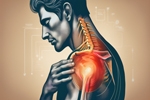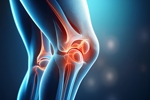Home »
Blog » Physical Therapy
| Stem Cell, PRP, Acupuncture in Queens & Long Island, New York
Physical Therapy | Stem Cell, PRP, Acupuncture in Queens & Long Island, New York
Elbow pain can seriously interfere with everyday tasks, whether it’s due to injury, arthritis, or overuse. Physical therapy offers targeted relief by strengthening the surrounding muscles, restoring mobility, and protecting the joint from further damage. Discover how tailored exercises and expert care can help you regain function and live pain-free.
Read more
Staying active with hip pain can be challenging, but the right exercises and lifestyle changes can help you maintain mobility and reduce discomfort. Low-impact activities like swimming and walking, along with targeted strengthening and flexibility exercises, can support your joints and alleviate pain. Learn how to manage your hip pain while keeping up with the activities you love.
Read more
Preventing shoulder pain while working out is essential for maintaining long-term fitness and joint health. Proper warm-ups, strength training, and mobility exercises can help protect the shoulders from injury. Focusing on good posture, using correct weightlifting form, and incorporating recovery strategies are key to avoiding overuse issues. Whether you're an athlete or a casual gym-goer, understanding injury prevention techniques can enhance performance and keep your workouts pain-free. Learn the best strategies to strengthen and protect your shoulders for a safer and more effective fitness routine.
Read more
Struggling with persistent shoulder pain? PRP therapy offers a cutting-edge, non-surgical solution that harnesses the body’s natural healing abilities. By injecting concentrated platelets into the affected area, PRP stimulates tissue repair, reduces inflammation, and enhances joint function. Ideal for conditions like rotator cuff injuries, tendonitis, and osteoarthritis, PRP therapy is a safe and effective alternative to surgery. Learn how this innovative treatment can help you regain mobility and live pain-free.
Read more
Rotator cuff tendinitis is a common cause of shoulder pain, often resulting from repetitive overhead motions, aging, or sports injuries. This condition involves inflammation of the tendons, leading to discomfort, weakness, and limited mobility. Early intervention with physical therapy, pain management techniques, and lifestyle adjustments can help prevent further damage. In severe cases, treatments like corticosteroid injections, PRP therapy, or surgical repair may be necessary. Understanding the causes, symptoms, and available treatments can help individuals manage pain effectively and restore shoulder function.
Read more
Your shoulders play a crucial role in mobility, stability, and overall upper body strength. Whether you're recovering from an injury, preventing pain, or enhancing athletic performance, strengthening your shoulders is key. This guide explores effective exercises, ergonomic tips, and pain prevention strategies to improve shoulder health and function. Learn how to build resilience in your shoulders with simple yet powerful techniques to keep them strong and pain-free.
Read more
Shoulder pain is a common issue that can significantly impact daily activities, from lifting objects to simple movements like reaching or driving. The shoulder is a complex joint made up of bones, tendons, ligaments, and cartilage, making it prone to injuries and wear over time. Common causes of shoulder pain include rotator cuff injuries, tendonitis, bursitis, arthritis, fractures, and nerve impingements. Understanding the root cause is essential for effective treatment, which may involve physical therapy, pain management techniques, or, in severe cases, surgery. Early diagnosis and proper care can help restore mobility and reduce discomfort.
Read more
Knee pain can limit mobility and affect daily life, but physical therapy offers an effective, non-invasive solution. By reducing inflammation, strengthening muscles, and improving movement patterns, physical therapy helps restore function and prevent future injuries. From stretching and strengthening exercises to low-impact aerobic conditioning, targeted therapy can provide lasting relief. Whether managing arthritis, recovering from injury, or avoiding surgery, physical therapy plays a key role in knee pain treatment. Discover how a structured program can help you regain mobility and improve your quality of life.
Read more
Staying active with knee pain may seem challenging, but the right exercises can improve mobility, strengthen muscles, and reduce discomfort. Low-impact activities like walking, water exercises, and targeted stretches help maintain joint flexibility while minimizing stress. Proper warm-ups, good footwear, and post-workout care like heat and ice therapy can also aid in pain management. With consistency, moderate exercise can lead to better knee function and less pain over time.
Read more
Knee pain can arise from injuries, overuse, or chronic conditions like arthritis. Common causes include ACL tears, meniscus injuries, bursitis, and osteoarthritis. Poor habits like wearing unsupportive shoes or skipping warm-ups can worsen symptoms. Treatment options range from physical therapy and medication to advanced interventions like corticosteroid or PRP injections. With proper care, you can manage knee pain effectively and improve your mobility and quality of life.
Read more
Love this Post? Spread the World






















